All of the photographs depicted below represent victims of the Dakota War, whether they were survivors, escapees, or captured. Some went on to write their own published narratives and some handed their stories down generation by generation which kept their memories alive. An alphabetized list of these family photographs is shown here: Family Photographs.pdf
If you have photographs to share, please email Jan Klein. (Click on name to go to email program.)

The Kochendorfer Family
Catherine holding Margaret, John, Johan holding Kate, and Rose. Curtis Dahlin and Bill Cox have written extensive biographies on the Johan Kochendorfer families. Here is Johan’s memorial page: http://www.findagrave.com/cgi-bin/fg.cgi?page=gr&GRid=34633762 Photo credit: Brown County Historical Society, New Ulm, MN.
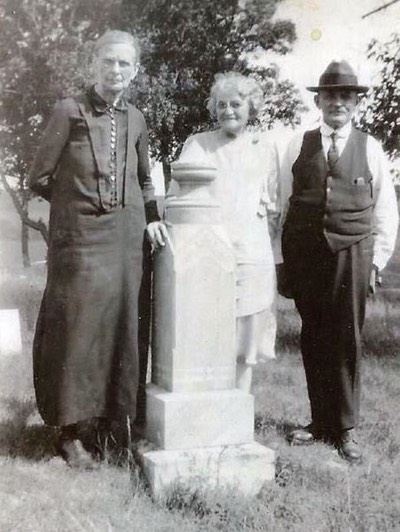
The Kochendorfer Children
These four orphans made new lives for themselves after the murders of their parents in Flora Township. Here is Rose, Margaret and John at their sister, Catherine’s grave. For more on this family, see our book What Happened to the Settlers in Renville County? in the Flora Township chapter and the New Settler Stories chapter, p. 103-105. Photo courtesy of Judith Lindstrom.

John and Anna Broberg Peterson Family

Right: Peterson family: Top (L-R) Edward, Christine (Mrs. Aug Swenson), & Henry Bottom: (L-R) John, Mary, & Anna Stina (Broberg). Photos courtesy of Pennington County History Vol. 2, 1991, by The Pennington County Historical Society, Thief River Falls, MN
Above left: Anna Stina (Broberg) and John Peterson An extensive biography on Anna Stina is found on findagrave.com. Here is the link:http://www.findagrave.com/cgi-bin/fg.cgi?page=gr&GSvcid=182561&GRid=57988858&.
Below: Anna Stina (Broberg)
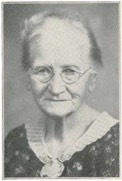

Guri Endresen-Rosseland
This is a photograph of Guri Endresen Rosseland, who lost her husband, Lars, and son, Endre, during the uprising in the Solomon Lake settlement . Guri escaped with her infant daughter, Anna, by hiding in the cellar of their cabin. She hitched the family oxen to a cart and set out with her child for refuge at Forest City, some thirty miles away. Enroute, she stopped at the homes of other settlers, attending to the needs of those wounded in the massacre. Some she took with her. All travel was in darkness.
A plaque and monument honoring her heroism was installed and dedicated in 1962 on the anniversary of those events that day. These memorials are located in the Vikor Lutheran Church Cemetery, near Willmar in Kandiyohi County. For more on Guri, see the Monuments page that shows the inscriptions on the markers. Photo courtesy of Bill Cox.
Andreas Lundborg

On August 20, 1862, during the Dakota uprising, the Indians attacked the West Lake settlement, (now called Monson Lake) near the boundary between Swift and Kandiyohi counties in Minnesota. and killed several in the community. All except one in each of the families of Anders P. and Daniel P. Broberg were killed, and three of Andreas Lundborg's sons (Anders, Gustaf, and Lars) were killed when they tried to help the Brobergs (son Samuel was wounded). Most of the West Lake victims had just attended a religious service at theLundborg home. For more on the Lundborg family, see the Monuments page. Photo courtesy of Bill Cox from the 85th Anniversary of Lebanon Lutheran Church by Victor Lawson.

Peter B. Broberg
Peter Broberg, then seven years old, was the only survivor of the Daniel P. Broberg family. On August 20, 1862, the third day of the Dakota uprising, Indians attacked the West Lake Settlement, now called Monson Lake. The Broberg story can be found on the Monuments page. An extensive biography on Peter Broberg is at: http://www.findagrave.com/cgi-bin/fg.cgi?page=gr&GSvcid=182561&GRid=58975944&
Photo courtesy of Bill Cox from the 85th Anniversary of Lebanon Lutheran Church by Victor Lawson.
Lavina Day Eastlick

Lavina Eastlick carried a bullet in her head, which she received after being shot at three times by the Sioux Indians in the massacre at Lake Shetek, Minnesota, in August of 1862. Mrs. Eastlick lost her 39 year-old husband, John, that day. He was shot by these Indians as well as their two children. John is commemorated on the Lake Shetek State Monument found on the Monuments page. Lavina’s remarkable story is told in her obituary which was posted on findagrave by Bill Cox. Here is the link: http://www.findagrave.com/cgi-bin/fg.cgi?page=gr&GRid=61103083
Photo credit: Minnesota Historical Society at: http://collections.mnhs.org/visualresources/details.cfm?imageid=42698&ImageNum=1&Page=1&Keywords=lavina%20eastlick&SearchType=Basic
Minnie Buce Carrigan
 Minnie lived in the Middle Creek settlement (Flora Township, Renville County) with her parents Gottfried and Wilhelmina Buce (also spelled Busse) and siblings. Her parents and sisters Bertha and Caroline were killed on August 18 and Minnie and her surviving siblings, August and Amelia, were taken captive and spent ten weeks among the Dakota before all captives were freed at Camp Release.
Minnie lived in the Middle Creek settlement (Flora Township, Renville County) with her parents Gottfried and Wilhelmina Buce (also spelled Busse) and siblings. Her parents and sisters Bertha and Caroline were killed on August 18 and Minnie and her surviving siblings, August and Amelia, were taken captive and spent ten weeks among the Dakota before all captives were freed at Camp Release.
Photo courtesy of Bill Cox, who has written a stirring biography on the Buce family for findagrave. Their memorial can be found on this link: http://www.findagrave.com/cgi-bin/fg.cgi?page=gr&GSvcid=182561&GRid=59271555&. Photo submitted by Bill Cox with approval of the Brown County Historical Society.
Helen Paddock Carrothers Tarble McNanney


Helen was one of the many women and children who were taken hostage by the Indians during the Dakota War. Her family lived in the Beaver Creek area of Renville County. Helen was the author of a book, published in 1904, called “The Story of My Capture and Escape during the Indian Massacre of 1862.” During this time, she lectured on the subject of the uprising, and, for a number of years during the State Fair, she had charge of the old settlers building. Her tombstone is found on the Victim’s Tombstone page. Photo courtesy of Bill Cox, who has written an extensive biography on Helen for findagrave. Here is the link: http://www.findagrave.com/cgi-bin/fg.cgi?page=gr&GRid=57988111.
Photo credit: Minnesota Historical Society at: http://collections.mnhs.org/visualresources/details.cfmimageid=176323&ImageNum=1&Page=1&Keywords=Helen%20Carrothers&SearchType=Basic

Three Survivors of the Sioux Uprising
These three very amazing women gathered for this photograph in their later years and undoubtedly had many stories to share. For more on their stories, see the Monuments, Family Photos and Victim’s Tombstones pages. Helen Carrothers (right), Urania S. White (center), and Mary Schwandt Schmidt (left), all three survivors of the Sioux uprising of 1862. Photo credit: Minnesota Historical Society at: http://collections.mnhs.org/visualresources/details.cfmimageid=35661&ImageNum=1&Page=1&Keywords=three%20survivors&SearchType=Basic
Alomina Hurd Woodward

Alomina was the wife of Phinneus Hurd who was killed by the Indians on his way to Dakota Territory probably in June, 1862. She did not know his fate until Indians attacked the Lake Shetek settlement in August, 1862, when she recognized her husband’s horse ridden by an Indian. She escaped the attack with her two young sons, William and Charley, and endured a perilous journey before being rescued by soldiers. After the uprising, she left Minnesota, married Eldridge Woodward and died in Pennsylvania at the age of 86. Her story is memorialized on findagrave by Bill Cox, who submitted this photo, at this link: http://www.findagrave.com/cgi-bin/fg.cgi?page=gr&GRid=63746635. Photo courtesy of the Woodward family of Pennsylvania.


Johannes and Krestina Lundborg
Johannes was the son of Andreas and Lena Lundborg who lived in the West Lake settlement (now called Monson Lake) of Swift County, MN. When the Dakota attacked the settlement on August 20, 1862, Johannes survived the attack but many of his family were killed. He left the area and eventually settled in Carver County, MN. Johannes married Krestina Larsdotter and they had one known child, Elfrida. The findagrave memorial posted by Bill Cox tells in detail the story of the Lundborg family at this site: http://www.findagrave.com/cgi-bin/fg.cgi?page=gr&GRid=58282605. Photo courtesy of Bill Cox from the 85th Anniversary of Lebanon Lutheran Church by Victor Lawson.
Samuel and Anna Lundborg

Samuel, the son of Andreas and Lena Lundborg, was another survivor of the West Lake conflict. He was wounded and three of his brothers, Anders, Gustav and Lars, were killed when they tried to help the Brobergs. Most of the West Lake victims had just attended a religious service at the Andreas Lundborg home. The Lundborgs decided to leave West Lake following the attack and eventually settled in Carver County, MN. Samuel married Anna Rohnson in 1874 and they had three children. Their tombstone is posted on the Victims’ Tombstone page. For more details on this family, here is the link to the findagrave memorial created by Bill Cox: http://www.findagrave.com/cgi-bin/fg.cgi?page=gr&GRid=58283095. Photo courtesy of Bill Cox from the 85th Anniversary of Lebanon Lutheran Church by Victor Lawson.
Diedrich and Margaret Wichmann
 One of the true heroes of the conflict, Diederich was working at the Lower Sioux Agency on the morning of August 18, 1862. When he heard shooting across the Minnesota River, he ran across the prairie and up the bluff to warn his family and neighbors. They gathered their belongings and animals and headed toward Fort Ridgely along with the Ahrens and Schmidt families. There the Wichmanns picked up son Fred, who worked at the fort, and they continued traveling until they reached Illinois. In 1864, they returned to their homestead on Section 14 in Beaver Falls Township. Diederich and Margaret were the parents of seven children. They are buried in the Beaver Falls Cemetery in Renville County. Their tombstone is shown on the Victim’s Tombstone page. For more details on their story, see the findagrave memorial posted by Bill Cox: http://www.findagrave.com/cgi-bin/fg.cgi?page=gr&GSln=wichmann&GSfn=diedrich&GSbyrel=all&GSdyrel=all&GSob=n&GRid=58424633&df=all&Photo submitted by Bill Cox with approval of the Renville County Historical Society.
One of the true heroes of the conflict, Diederich was working at the Lower Sioux Agency on the morning of August 18, 1862. When he heard shooting across the Minnesota River, he ran across the prairie and up the bluff to warn his family and neighbors. They gathered their belongings and animals and headed toward Fort Ridgely along with the Ahrens and Schmidt families. There the Wichmanns picked up son Fred, who worked at the fort, and they continued traveling until they reached Illinois. In 1864, they returned to their homestead on Section 14 in Beaver Falls Township. Diederich and Margaret were the parents of seven children. They are buried in the Beaver Falls Cemetery in Renville County. Their tombstone is shown on the Victim’s Tombstone page. For more details on their story, see the findagrave memorial posted by Bill Cox: http://www.findagrave.com/cgi-bin/fg.cgi?page=gr&GSln=wichmann&GSfn=diedrich&GSbyrel=all&GSdyrel=all&GSob=n&GRid=58424633&df=all&Photo submitted by Bill Cox with approval of the Renville County Historical Society.
Louisa Frohrip Bott

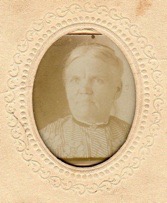
Louisa was born September 6, 1839 in Germany and died November 26, 1921 in Redwood Falls, MN. She was the daughter of Maria Bahlke and Johan Frohriep. In 1855, after Johan died in Germany, Maria and some of her children immigrated to America with her brother Andrew Bahlke. Louisa worked at the Lower Sioux Agency at the time of the outbreak and escaped to Fort Ridgely. Andrew was killed that day at the homestead located on the bluff north of Morton, MN. Her mother Maria was seriously wounded. Louisa married Valentin Bott in 1864 and they settled in Redwood Falls where they raised their family. She is buried in the Lamberton City Cemetery outside of Lamberton MN, with her husband Valentin and two of her sons. To read more about the Bahlke/Frohrip family, see the tab, Descendant Stories. Photos submitted by Kathy Brown.
George and Salomé Buery

This is a photograph of George and Salomé Buery and their family at their homestead on Section 30 of Birch Coulee Township located north of the city of Morton. Their family escaped unharmed during the Dakota uprising and like so few, they returned to their claim in Renville County but not until 1865. Salomé’s sister, Mary Coffman, married John Kumro, and they were neighbors in Birch Coulee. For more on this family, see the tab Victim’s Tombstones and Descendant Stories on this website. The second photograph is of George and Salomé Buery. The third photograph is of George Buery. Photos submitted by Glenn Vogtman.

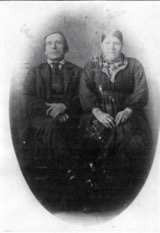

Johanna Lundborg Paulson
Johanna was the daughter of Andreas and Lena Lundborg and was a survivor of the West Lake Massacre on August 20, 1862 in Kandiyohi County, MN. Her three brothers, Anders, Gustaf and Lars were killed and another brother Samuel was wounded. Her parents and the surviving children were heartbroken, but they eventually made their way back to their homestead near West Lake. Johanna married Erick Paulson in 1869, and they went on to raise their 8 children on the old Lundborg farm in Section 6, Arctander. She died at the home of a daughter in Kerhoven, MN on March 21, 1916. Additional information on the West Lake Massacre is found under the Monuments Tab, Broberg-Lundborg State Monument. For her obituary, see the Descendant Stories tab. Photo submitted by Joan Paulson Wilcox.
Theolon and Genevieve Perreault Luce, Daughter of Pierre and Marie Elizabeth Perreault

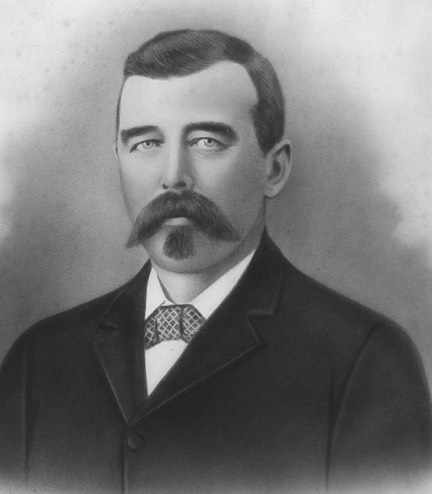
Genevieve Perreault was about twelve years old when the Picard and Perreault homesteads at Birch Coulee were attacked during the Sioux uprising of 1862. Genevieve’s father, Pierre, and brother-in-law, Eusebi Picard were killed. Her sister, Marguerite Cardinal, nephew Clement Cardinal, Jr. and niece Elizabeth Picard were captured and held at Camp Release. Genevieve married Theolon Luce about 1865 at St. Paul, Minnesota. They had a farm near Shakopee where they raised 13 children. Genevieve passed away November 12, 1939 and is buried in Calvary Cemetery, St. Paul, MN. For more on this family, see the Descendant Stories section on this website. Photos courtesy of Jenna Taverna and Colleen Hansen-Harvey.
Bertha Ienenfeldt Lawin

Bertha was the infant daughter of Wilhelmina and William Ienenfeldt who lived in the area of Smith Creek in Renville County during the outbreak. Her father was killed and she and her mother were taken hostage. Wilhelmina’s survival and her riveting story is found on the Descendant Stories section. This picture is taken on her 84th birthday, April 13, 1946, at the family farm south of Renville where she and her second husband, Charles Lawin, settled in 1899. She lived there with her son, John, and granddaughter and her family, the Shuberts, until her death on May 18, 1947. Photograph submitted by Ruth Jacobson.
Anton and Walburga Drexler Ochs Family



The Ochs family above were some of the fortunate survivors of the Milford attacks where 52 settlers were killed. Their family consisted of Cecilia, whose riveting story of her escape appears in the Descendant stories on this website, and sons Adolph, Rudolph and William. The parents and sons escaped to New Ulm and were eventually reunited with their daughter Cecelia. Photographs submitted by Matthew Boisen, from the Brown County Historical Society.
Eusebi and Elizabeth Perreault Picard 
Elizabeth was the daughter of Pierre and Elizabeth Perreault. Her first husband, Eusebi Picard, was killed during the Indian attack as was her father, Pierre. Her mother and siblings, Genevieve, Melina, Joseph, George, and Philomene, escaped to Fort Ridgely. Elizabeth and her children, Eusebi, age 4, and Elizabeth, age 2, were captured by Little Crow. Elizabeth had fallen from her horse and her captors, thinking her dead, left her and Eusebi, Jr. behind. Young Elizabeth was one of the prisoners surrendered at Camp Release on September 26, 1862. Sometime later. Elizabeth married Joseph Reneau. Photo from the Brown County Historical Society and submitted by Chris Knott.
Mary Philomene Perreault and Edward Bell
Philomene was the daughter of Pierre and Elizabeth Perreault and was among those who escaped to Fort Ridgely with her mother and siblings after her father was killed. She married Edward Bell and they raised a large family in Stillwater as noted in this family picture taken in 1905. The second photograph of Philomene and Edward was probably taken on their 50th wedding anniversary in 1928. Photographs above submitted by Chris Knott.


Emilie Klappenbach and John Clasen
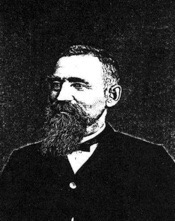
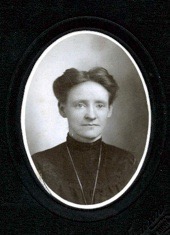
John was the son of Charles Clasen (Johan Heinrich) and Carolina Wolf. He immigrated to the United States about 1862 after serving in the Royal English Navy and Marines. His parents then lived in Birch Coulie. On August 18, 1862, the Dakota began attacking white settlers north of the Minnesota River. His father, Charles and brother, Frederick were killed. His mother, Carolina, escaped along with John and made their way to Fort Ridgely. Fred’s wife, Martha McConnell Clausen, and her two infant daughters were taken captive and released six weeks later. John filed a depredation claim on March 27, 1863 and received $14.00 for 18 days service as a teamster. He was then conscripted in the Civil War effort in 1864 and served until 1865. While serving, he made a promise to a fellow soldier, Andreas Bauer, that he would look in on his wife if he were to be killed. He did and married Emilie Klappenbach Bauer in 1865. They went on to have nine children. John died in 1925 at the age of 91.
Lake Shetek Survivors at Fort Randall, Dakota Territory, November 1862 from the Collections of the South Dakota Historical Society & Archives, Pierre, South Dakota

On August 20, 1862, the isolated settlement at Lake Shetek in SW Minnesota was attacked by Dakota warriors. The women and children pictured here were taken captive. Near present day Mobridge, South Dakota, a group of young Lakota men negotiated for the captives’ release. Using their own possessions as ransom, the young Dakota men rescued and escorted these women and children to safety to Post LaFramboise just above Fort Pierre and then to Fort Randall.
From left to right: Roseanne Ireland, Mrs. Julia Wright holding her daughter Eldora, Emma Duley (rear, daughter of Laura), Lillian Everett, Mrs. Laura Duley holding her son Jefferson, and Ellen Ireland.
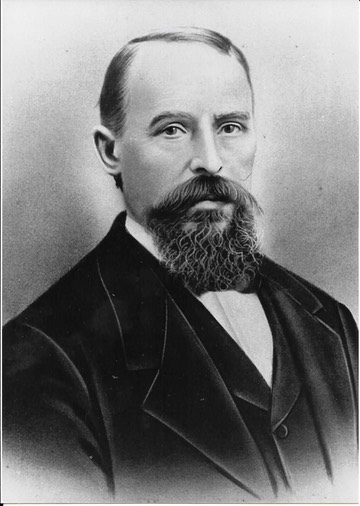
Inquiries contact: Minnesota Territory, PO Box #263, Cottage Grove, MN 5501
Henry Ahrens
Henry and his wife Minnie were among the earliest to settle in Beaver Falls Township and among the first to return to their homestead after the war. Henry served as a judge, county treasurer and commissioner and state senator while they lived in Renville County. A biography of this family is found in the Beaver Falls Township section of What Happened to the Settlers in Renville County? Volume II. Photo courtesy of the Renville County Historical Society.
Christian and Benedict Juni, Jr.
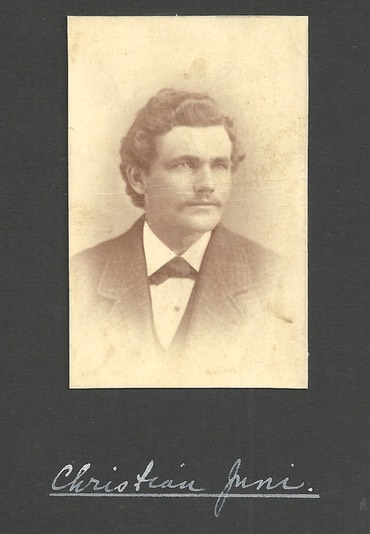
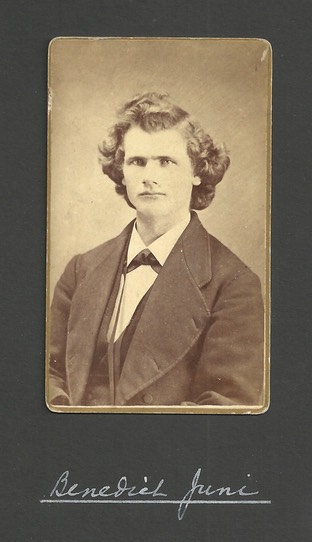
Christian and Benedict, Jr. were sons of Benedict, Sr. and Mary Juni who lived in Beaver Falls Township at the time of the war. Ten year-old Benedict, Jr. was taken captive near his home and released six weeks later at Camp Release. Christian escaped to Fort Ridgely with his mother and other siblings. For more on the Juni family, see their narrative in the Beaver Falls Township chapter in What Happened to the Settlers in Renville County? Volume II. Photos from the Collection of the Brown County Historical Society, New Ulm, MN.
John Meyer and Justina Krueger

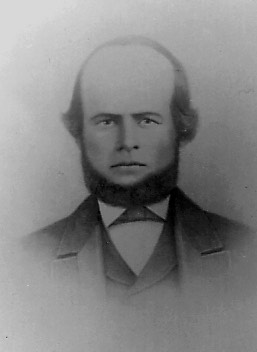
Justina Krueger became the wife of John Meyer after her husband Friedrich was killed while trying to escape. Her escape to the Fort took 13 days and that story is told in the Flora Township chapter of What Happened to the Settlers in Renville County? Volume II. John’s family were all killed but he made it to the fort and aided in that defense. John’s story is found in the Beaver Falls chapter. Both the Krueger and Meyer stories are also found in the New Settler Stories chapter. Photos courtesy of Sheri Kennedy.
Oliver Martell
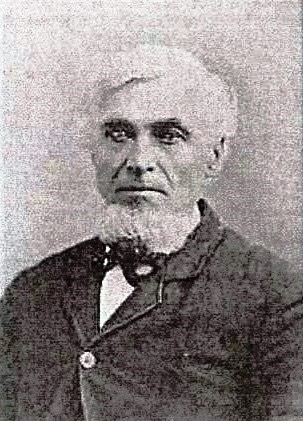
Oliver Martell operated the ferry across the Minnesota River at the Redwood Agency and probably lived between the LaCroix and Faribault homes. He was the one who warned the settlers about the uprising as he rode through the settlements on his horse. Oliver’s story can be told in the book What Happened to the Settlers in Renville County? in the Birch Cooley Township chapter. Photo courtesy of Don Dawson.
Johan Heinrich Friedrich and Gertrud Burke Rieke George Rieke and Sophia Lammers
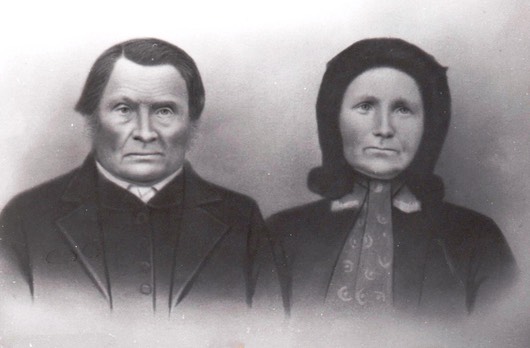

The Rieke family homesteaded on the shores of Mud Lake located in Cairo Township about four miles east of Fort Ridgely. They raised their large family of thirteen children at this settlement. Four of their sons were among the fort defenders. After the outbreak, the family continue to farm on Mud Lake. Son George married Sophia Lammers of Flora Township in 1864 whose husband William was killed and two sons taken hostage. The Rieke story can be found in the book What Happened to the Settlers in Renville County in the Cairo Township chapter. Photos courtesy of Nancy Gulbranson.
Werner Boesch
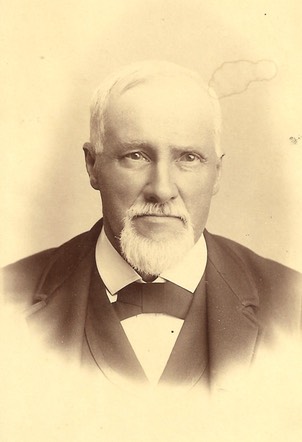
Werner Boesch was an early settler in New Ulm in 1857 when it was still a frontier town of fewer than 900 inhabitants. He then settled on a claim along Three Mile Creek in Camp Township. Werner was among the volunteers who aided in the defense of Fort Ridgely and his wife, Anna nursed the wounded and the sick. After the war, Werner developed a property in New Ulm which was called the Boesch, Hummel and Maltzahn Block, now on the National Register of Historic Places. For more on this family, see the book What Happened to the Settlers in Renville County in the Camp Township chapter. Photo from the Collection of the Brown County Historical Society, New Ulm, MN.
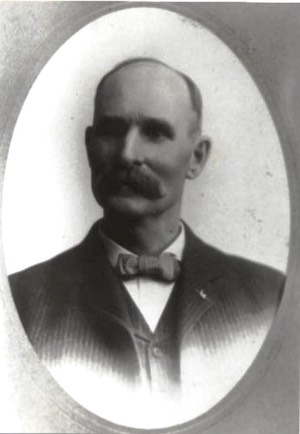
Louis Kietzmann
Louis Kietzmann was the son of Paul and Dorothea Kietzmann. His parents and four siblings were killed when his family was trying to escape to the fort. Eleven year-old Louis was taken captive and freed at Camp Release six weeks later. Their deaths and the deaths of their neighbors became known as the Kietzmann Massacre. For more on this, see the book What Happened to the Settlers in Renville County in the Flora Township chapter and also in the New Settler Stories chapter. Photo courtesy of Sheri Kennedy.
August Gluth
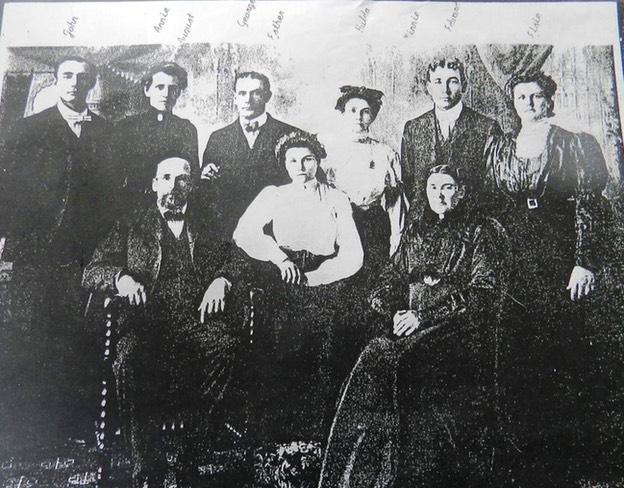
August was the young 12-year old son of Christoff and Henrietta Gluth from Milford Township in Brown County but he was captured while herding stock near Beaver Falls in Renville County. He was escaped from his captivity along with Louis Kietzmann and was likely found by Sibley’s forces and eventually was at Camp Release six weeks later. He married Minnie Porth and they raised a family of seven children in Eden Township in Brown County. This is a photograph, courtesy of Nancy Gulbranson that shows his family.
The Reyff Family
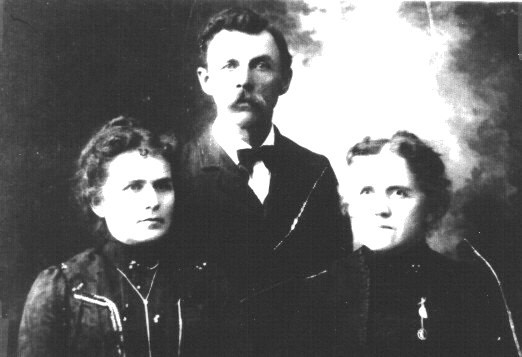
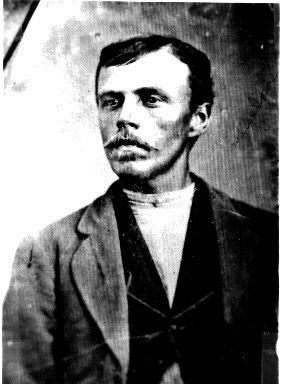
This family was living in Flora Township and suffered great losses in the outbreak. Eusebius Jr., his wife Margreth and children Benjamin and Annie were killed. Their daughters Emma and Mary were not at home that day but made it to the fort for safety. Eusebius III and Emanuel, who had witnessed the killings, eventually volunteered to serve in the military force that was sent out to bury the dead. Arriving at their homestead, they found their bones and buried them in a mass grave near the garden. For more on this story, see our book What Happened to the Settlers in Renville County? in the Flora Township chapter and Emanuel’s story on p. 115 in the New Settler Stories chapter. Photos courtesy of Bob Reyff show Emanuel at age 23 and Mary, Eusebius and Emma.
Rev. Christian Louis Seder
Rev. Seder was a travelling pastor who served families on the frontier. He was heading home to New Ulm on August 27 with his son and John Lettou after conducting services in Flora Township when the Dakota spotted them and killed all three. His full story can be found in our book What Happened to the Settlers in Renville County? in the New Settler Stories chapter on p. 121. Photo courtesy of Rev. Richard Jacobson from a publication of the Wisconsin Conference of the Evangelical Association.
Frederick and Dorothea Krause
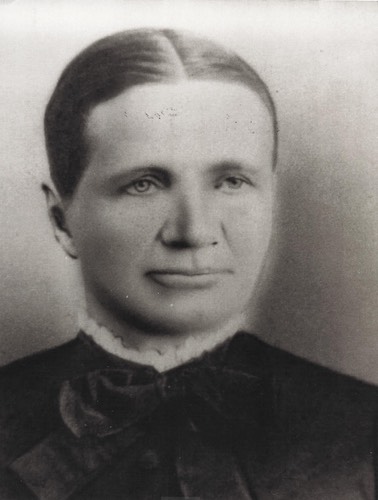
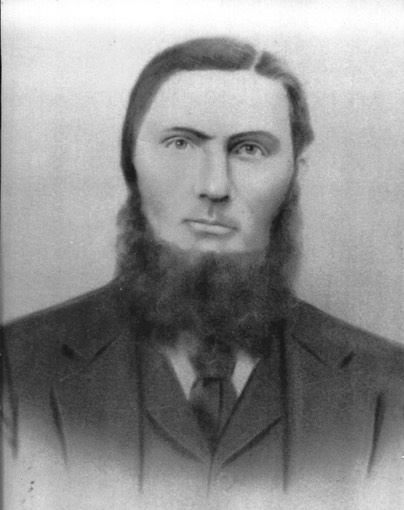
This family was part of the group known as the Kietzmann Party which suffered great losses. Fred eventually escaped to the fort but his wife, Dorothea, and two of her children were taken captive. Their heroic story can be found in our book What Happened to the Settlers in Renville County? in the Flora Township chapter and the New Settler Stories chapter, p. 106. Photos courtesy of Gayle Coyer.
Johan Jacob and Wilhelmine Doege Urban
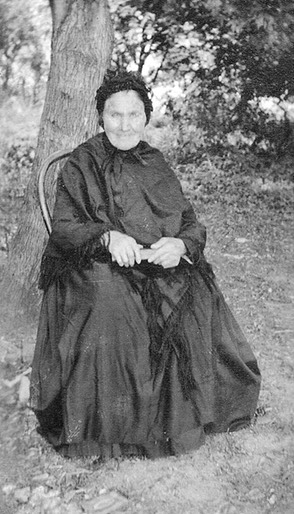
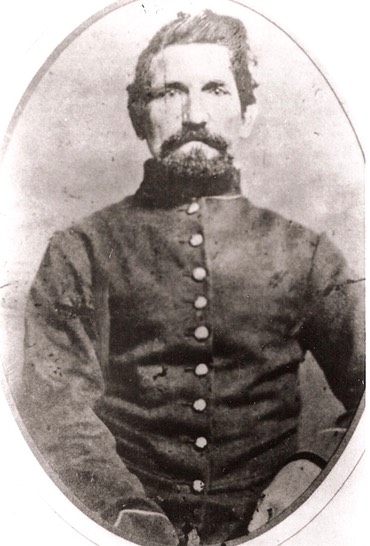
Johan was working in New Ulm the day of the rebellion and his wife and five children faced the ordeal alone. Wilhelmine (also known as Pauline), Albert, Louisa and Rosina were taken captive and 8 year-old August made it to the fort, although critically wounded. Johan went on to serve in the Civil War. For more on this family, see our books What Happened to the Settlers in Renville County? in the Flora Township chapter and Neighbors Share the Tragedy, p. 48. Photos shown of Johan in his Civil War uniform and Wilhelmine are courtesy of Marba Pogue.
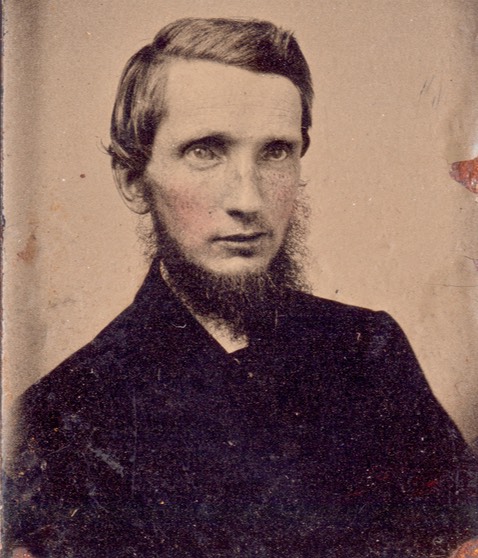
William Pitt Shattuck I
William Pitt Shattuck I, also known as Pitt, went on a trapping expedition, which is believed to have begun before the uprising, and explored the Lake Osakis area. He was most likely in the upper north region of the lake, a remote area. He was killed by two Sioux Indians, the date unknown, in 1862. He had just finished checking his traplines when he found the two Indians raiding his cache. His body was pushed 'under the ice' and the two Indians escaped. Family members relate that it was Shakopee and Medicine Bottle who were the culprits. Medicine Bottle was observed fighting at Fort Abercrombie by John H. Mackenzie, and Shakopee had left Little Crow, as he disagreed with attacking only stockades. He headed north with his band, attacking settlers where they lived. They both eventually headed for Canada.
Mary Hayley
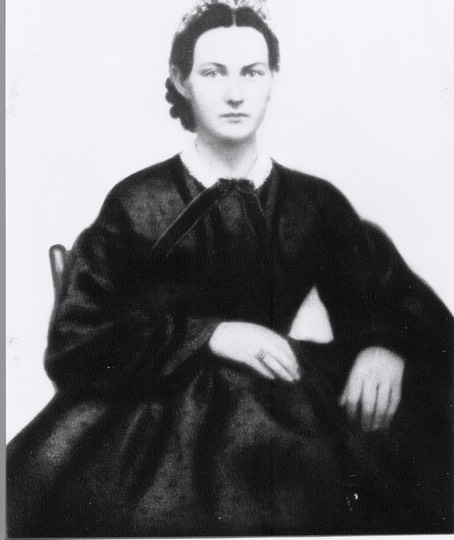
Mary Haley married Patrick Hayden, who was killed in the uprising. Baby Catherine Hayden (Katie) whom she carried the 17 miles to Fort Ridgley died the next year, in January 1863. The following month, in February 1863, Mary Hayden married Henry Converse, who was a widower from Winona County. Henry Converse worked as a moulder, foundryman, farmer, and owner of a billiard hall as the Converse family moved from Winona to La Crosse, Wisconsin, then back to Minnesota. In November 1868, the Converses settled in Waseca County where Henry bought 80 acres of land and resumed farming. Henry and Mary Converse had three children together: Harriet Belle (b. 16 Oct 1865), Mark Wallace (b.16 Nov 1868), and Mildred Elizabeth (b. 16 Oct 1874). Mary died on 1 Oct 1924, at the age of 81.
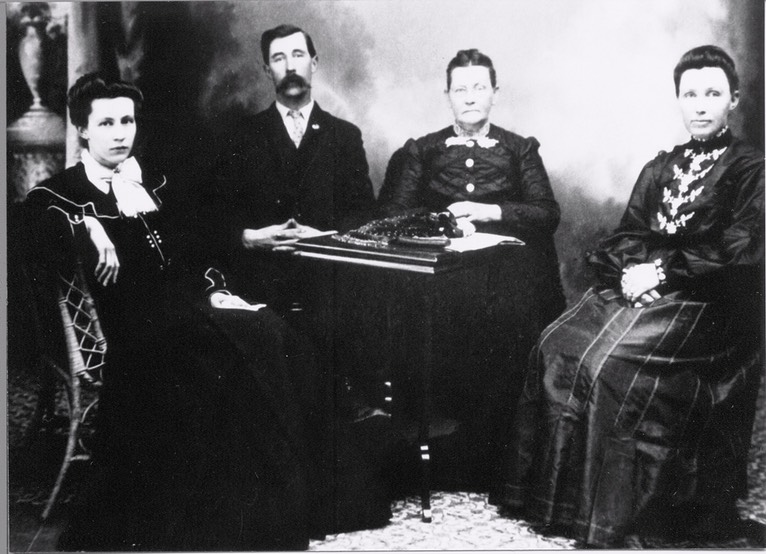
Mary Haley with her three children (from left to right: Mildred, Mark, Mary, and Harriet).